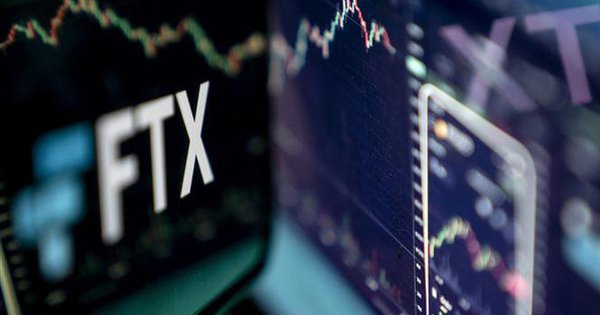Crypto Futures After the Fall of FTX
- Tram Ho

Icon of FTX digital currency exchange on computer screen. Photo: AFP/VNA
Last November, FTX and its subsidiaries in the US filed for bankruptcy and Mr. Bankman-Fried stepped down as CEO of FTX. FTX collapsed after only a few days of investors continuously withdrawing assets from wallets and being refused to buy back by Binance exchange.
During the ensuing investigation, the prosecutor discovered suspicious details about the money flow between FTX and crypto hedge fund Alameda Research (also founded by Bankman-Fried). At the same time, FTX is also suspected of misappropriating customer deposits.
During a hearing in the US House of Representatives on Financial Services, John Jay Ray III, who is in charge of restructuring the electronic exchange FTX, was asked to compare FTX to Enron, another financial crash that happened. He was involved in remediation. “This is simply an old embezzlement,” Ray said. It’s not complicated at all.” FTX takes customer funds and uses it for its own purposes.
FTX and crypto hedge fund Alameda Research both operate out of the Bahamas without any oversight. At least $8 billion in customer funds are currently “missing.” This has led crypto enthusiasts to rethink the future of finance and politicians to call for tighter control over the crypto space.
Is this the end of cryptocurrencies?
“In the present tense, yes,” Frances Coppola, an independent financial and economic commentator, told Al Jazeera. She pointed out that in its 14 years of existence, the crypto world has failed to create any significant real-world use cases other than providing crime financing. It is primarily a speculative investment that only works as long as real USD is injected into the system.
“Now, central banks around the world are rapidly raising interest rates. There is a liquidity squeeze going on in global markets and money is being sucked out of risk assets.” Ms. Frances Coppola assessed that in the long run, it will be difficult for digital currency to return to the high price level as it was a year ago. According to her, the price of digital currency will fall further.

Samuel Bankman-Fried, Founder and CEO of FTX. Photo: AFP/VNA
Professor Carol Alexander at the University of Sussex (UK) does not think that digital currency will disappear completely. “We’re going through a dot-com-like meltdown with many small companies defaulting,” she argues. The dot-com bubble occurred between 1995 and 2000. It led to a recession caused by highly speculative investment in technology companies. The bubble burst in early 2000 after investors realized that many of these companies had unviable business models.
Professor Charles Whitehead at Cornell Law School in New York agrees. “It may be too early to talk about the death of cryptocurrencies, but we have clearly been late in our efforts to regulate it,” he told Al Jazeera.
“The theoretical promise of cryptocurrency is a payment system that is not subject to the control of intermediaries,” said Nicholas Weaver, a researcher at the University of California at Berkeley.
John Stark Reed, formerly of the US Securities and Exchange Commission, commented: “The promise of cryptocurrencies has always been to get rich quick with no effort, no experience and no risk. “. Bankman-Fried’s fluent talk also played a role in making people think that FTX is a safe way to store their money and safe for an investment.
Investors poured money into FTX’s value up to 32 billion USD while they did not do much research on the company’s operations. FTX made a massive buyout from late 2021 to 2022, spending nearly $5 billion on countless crypto businesses. FTX also spent $256 million on 35 properties in the Bahamas.
“I think many investors consider FTX safe, even if in reality there are no crypto exchanges regulated enough to consider it safe,” Mr. Weaver said.
Most of the actual inflows into cryptocurrencies fell in 2021. The rest stopped in May 2022, when the TerraUSD coin collapsed.
One theory among critics is that all crypto exchanges go bankrupt because they are heavily leveraged and filled with unsoldable crypto assets with no market demand. market, but still charged at market value and not at what the seller could actually receive. If that is true, then the future of cryptocurrency could involve many other crypto companies filing for bankruptcy.
Source : Genk
